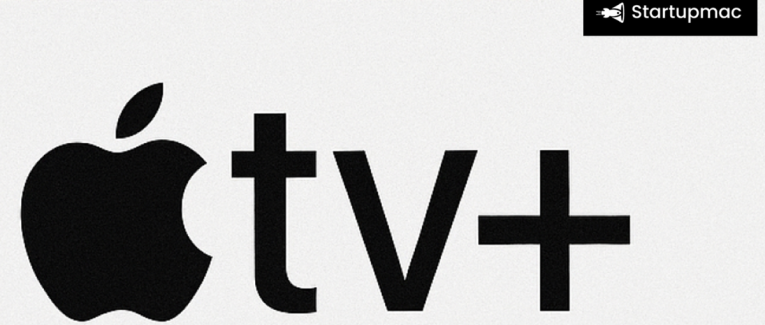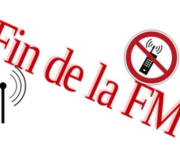
Apple TV+ Price Surges 30% to $12.99: What It Means for Streaming and Consumers
 6 min
6 min
Su Panodyssey puoi leggere fino a 10 pubblicazioni al mese senza effettuare il login. Divertiti 8 articles da scoprire questo mese.
Per avere accesso illimitato ai contenuti, accedi o crea un account cliccando qui sotto: è gratis!
Accedi
Apple TV+ Price Surges 30% to $12.99: What It Means for Streaming and Consumers
Apple has announced a sharp 30% increase in the subscription cost of its streaming service, Apple TV+, raising the monthly price from $9.99 to $12.99. The hike, effective immediately for new subscribers and rolling out gradually for existing users, marks the latest chapter in the ever-evolving streaming wars. With this bold move, Apple has joined the ranks of other media giants like Netflix, Disney+, and Amazon Prime Video, which have all increased subscription prices in recent years.
While some consumers may see the hike as just another burden on their wallets, Apple’s strategy reveals much more about the shifting economics of streaming, the company’s long-term vision, and the competitive pressures reshaping digital entertainment globally.
Why Apple Raised the Price
Apple TV+ debuted in 2019 at a mere $4.99 per month, undercutting competitors and luring millions with original programming such as The Morning Show, Ted Lasso, and Severance. Over time, however, the service expanded its catalog and began investing billions into premium productions.
The new price tag of $12.99 is Apple’s way of aligning its service with the realities of the streaming market: skyrocketing production costs, rising licensing fees, and the growing demand for high-quality, exclusive content. Inflation and currency pressures have also made it increasingly difficult to sustain the original lower prices.
For Apple, this is not just about covering costs—it’s also about signaling that TV+ is no longer a discount add-on but a premium offering worthy of competing with Netflix and HBO Max.
The Streaming Industry Context
Apple is not alone in raising subscription fees. Over the past two years, Netflix has increased prices globally, Disney+ nearly doubled its U.S. subscription price in some tiers, and Amazon Prime has steadily become costlier. The once “cheap” streaming model that promised to replace expensive cable packages has transformed into a multi-service ecosystem where consumers often juggle multiple subscriptions.
Apple’s decision reflects the broader trend of consolidation and price optimization in the streaming industry. With subscriber growth slowing and customer acquisition costs rising, companies now focus on maximizing revenue per user rather than chasing sheer volume.
How Apple TV+ Justifies the Hike
Apple is betting on the strength of its content portfolio to justify the price bump. Over the years, the platform has built a reputation for producing critically acclaimed shows and movies. Wins at the Academy Awards and Emmy Awards have cemented its credibility, with titles like CODA becoming cultural touchstones.
Moreover, Apple’s bundling strategy adds value. Many subscribers access Apple TV+ through the Apple One bundle, which combines music, iCloud storage, fitness, and more. By raising TV+ prices, Apple also nudges users toward bundles, driving deeper integration into its ecosystem. This ensures customer retention while making Apple’s ecosystem harder to leave.
Impact on Consumers
For the everyday user, the increase to $12.99 may not seem monumental, but when combined with similar hikes across streaming platforms, the cumulative effect is significant. A household subscribing to Netflix, Disney+, Amazon Prime, and Apple TV+ could now spend upwards of $60–70 a month—ironically echoing the cable bills streaming was supposed to replace.
Some consumers will likely cancel or rotate subscriptions, picking services based on seasonal releases or specific shows. Apple TV+ might benefit from its reputation for quality-over-quantity content, but the smaller catalog compared to Netflix or Disney+ could still make the new price point feel steep for casual viewers.
Investor and Market Implications
Wall Street is closely watching Apple TV+’s trajectory. While Apple’s streaming service revenue remains a small fraction of the company’s overall business—dominated by iPhones, Macs, and services like the App Store—the strategic importance is immense. Streaming strengthens Apple’s services revenue stream, one of the fastest-growing segments in its financials, and deepens customer engagement within the Apple ecosystem.
For investors, the price hike could be seen as a confident move, signaling Apple’s belief in its content’s value and its ability to withstand churn. Analysts predict that while some subscribers may drop off, the overall revenue boost will outweigh cancellations.
Global Ramifications
The price increase is rolling out across multiple regions, and its impact may vary depending on local purchasing power. In emerging markets like India, where Apple TV+ has already been priced more competitively than in the U.S., a steep hike could limit growth. However, in developed markets, Apple is betting that brand loyalty and the prestige of its content will allow it to maintain its subscriber base.
The Future of Streaming
Apple’s price adjustment underscores an unavoidable reality: the golden age of cheap streaming is over. As production costs climb and competition intensifies, every major platform is recalibrating its strategy. Subscription fatigue is setting in, and users will increasingly be forced to choose between services—or cycle through them strategically.
In this crowded battlefield, Apple’s strength lies in its ecosystem advantage. Unlike pure-play streaming rivals, Apple doesn’t need TV+ to be immediately profitable. Instead, it uses TV+ to reinforce its hardware sales and broader services portfolio. This unique positioning gives Apple the freedom to invest heavily in content and gradually raise prices without alienating its core audience.
Conclusion
Apple TV+’s jump to $12.99 per month represents more than just a price increase—it’s a declaration of intent. Apple is signaling that it wants to stand shoulder to shoulder with Netflix, Disney+, and HBO in the premium streaming category. For consumers, the move will sting amid rising subscription fatigue, but for Apple, it’s a calculated step toward long-term dominance in the entertainment ecosystem.
As the streaming landscape evolves, Apple’s willingness to align price with value could either solidify its position as a serious contender—or test the loyalty of viewers who are already overwhelmed by choice.









 English
English
 Français
Français
 Deutsch
Deutsch
 Italiano
Italiano
 Español
Español



 Contribuisci
Contribuisci







 Puoi sostenere i tuoi scrittori preferiti
Puoi sostenere i tuoi scrittori preferiti





